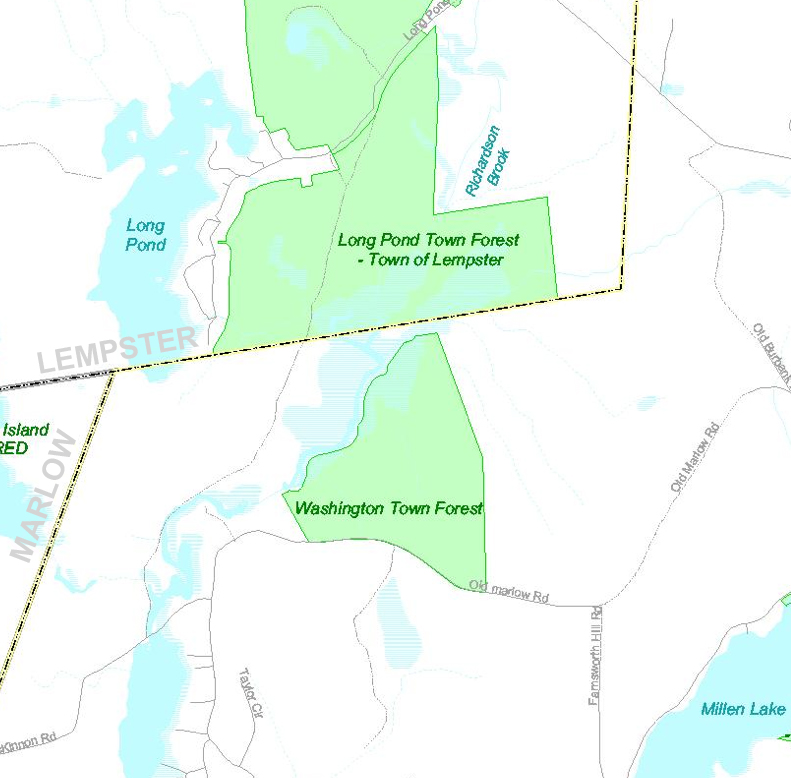|
The 146-acre
Farnsworth Hill Lot is located in western Washington, between
Farnsworth Hill Road, the Lempster Town line, and the Ashuelot
River. An important land for conservation, this property has
more than 2,000 feet of undeveloped river frontage along Ashuelot
River. The Farnsworth Hill Lot also abuts the 657-acre Lempster
Long Pond Town Forest to the north, creating a combined undeveloped
area of 803 acres.

Several types of wildlife habitat are well represented on
this property. Most importantly, the Ashuelot River and various
marshes and wet areas adjacent to it are excellent examples
of rivervine wildlife habitat, supporting numerous species
of amphibians, reptiles, birds, mammals and fishes. Both forested
and non-forested wetlands can be found along the river, with
a variety of different resident plant species. This habitat
diversity is ideal for maximizing the number of wildlife species
that can reside in or near the river.
Other habitats include extensive red maple floodplain forests
(a little further back from the river), as well as both softwood
(spruce/fir, also pine) and hardwood (sugar maple and red
maple) upland forests. Recent logging operations have made
new openings in which fruiting shrubs such as blackberries
and winterberry holly can be found.
There are four forest types or management
units (MU's) on the Farnsworth Hill Lot:
1) MU 1 consists of well-spaced sugar maples, with some red
maple and white ash mixed in. The majority of stems are pole-sized
(less than 12"; in diameter), but scattered small and large
sawtimber trees of the same species also occur. Much of this
MU is park-like in appearance, with little underbrush other
than grasses and brambles. This valuable hardwood stand has
been recently thinned and needs time to mature.
2) MU 2 is a small (6-acre) pocket of small and large sawtimber
white pine. Secondary species include red spruce and red maple
poles and small sawtimber. This stand has been recently logged,
leaving some bole damage on the residual pines, but overall
this is a valuable stand that should be perpetuated.
3) MU 3 makes up the bulk of this property, with two large
stands spanning both sides of MU's 1 and 2. Management unit
3 is a mix of red maple, red spruce, balsam fir and yellow
birch. Most of the stems are between pole and small sawtimber
size (8-14"), but patchy and scattered large sawtimber trees
of all species can also be found. Much of this MU has been
repeatedly harvested in the past 20 years, but the remaining
trees tend to be well spaced and undamaged.
4) MU 4 is inoperable due to wet soils that are frequently
saturated by fluctuations in the Ashulot River water level.
MU4 is the Ashuelot River floodplain, with a variety of sedge
meadows and other wetland plant communities. The majority
of forested areas consist of pole-sized stands of either pure
red maple, red maple with spruce/fir, or pure spruce/fir.
|

